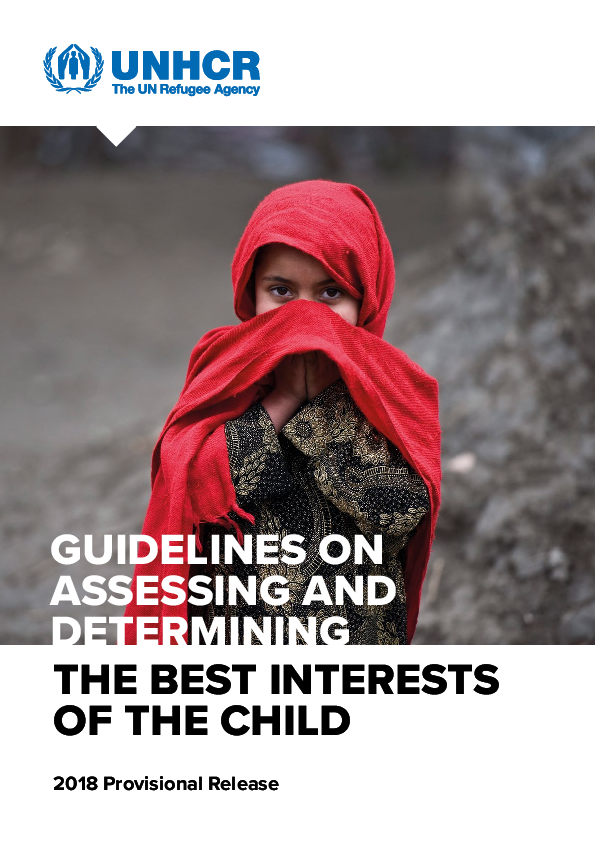
Manuals, Toolkits and Guidance
Guidelines on Assessing and Determining the Best Interests of the Child: 2018 Provisional release
Publication year:
2018
English
Format:
(2.8 MiB)
Publisher:
UNHCR, United Nations High Commissioner for Refugees
Building on the practice of domestic child protection systems and on the first 10 years of implementation of UNHCR’s Guidelines on Determining the Best Interests of the Child, these updated Guidelines on Assessing and Determining the Best Interests of the Child (BIP Guidelines) replace both the 2008 UNHCR Guidelines on Determining the Best Interests of the Child and the 2011 Field Handbook for the Implementation of UNHCR BID Guidelines, and offer:
- Chapter 1: An overview of the history and scope of UNHCR’s work on the Best Interests Procedure.
- Chapter 2: Guidance on how to apply the best interests principle in practice.
- Chapter 3: Explanation of how to undertake child protection case management within the framework of the Best Interests Procedure, including the systematic use of the BIA.
- Chapter 4: A definition of the three situations in which UNHCR must undertake a BID. These include (i) the identification of the most appropriate durable solution or complementary pathway for unaccompanied children (and separated children2 where there is an additional significant risk factor or protection concern); (ii) the identification of the most appropriate options for children at risk in exceptional situations; and (iii) decisions which may involve the separation of a child from parents against their will.
- Chapter 5: Guidance on how to set up and implement BID procedures.
The BIP Guidelines are now issued as a provisional release until the end of 2019 to complete the process of feedback and validation from UNHCR staff and counterparts. In sharing this release with you, we invite you to use the BIP Guidelines in your daily work and we would welcome your feedback on any errors, inconsistencies or omissions you identify during your use of these updated guidelines. Please use this form to share your feedback.
Read full abstract
View & Download
Document information
Content type
Rights
© Author/Publisher
Keywords
Share
Link
